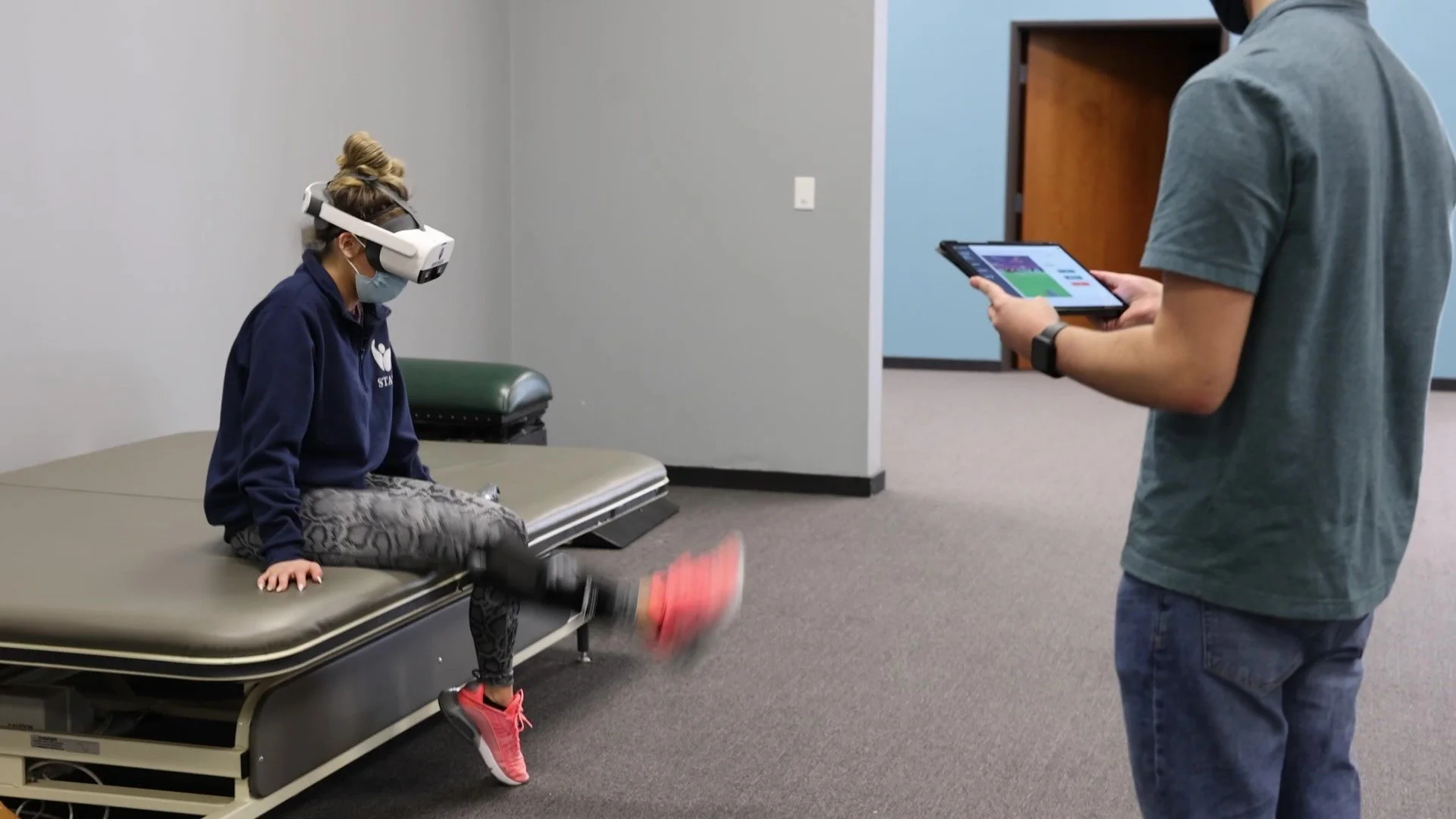Can Virtual Reality Be Effective With Orthopedic Patients?
Written by: Arik Yates PTA
During my time as a therapist, I have always gravitated towards the neuro population of patients. It started back in my second to last semester in school. Despite the complexity and at times difficulty therapists would face when working in this space, the reward of being able to see improved function in complex injuries is great. That particular reason and some unexplainable desire in my innermost being lead to me daydreaming about working in neuro clinics upon graduation. Fast forward 5 years from the initial fascination, I specialize in pediatric and adult neuro with a major focus of using Neuro Rehab VR’s XR Therapy system with these populations. However, the flexibility of this virtual reality modality kept it a viable tool even for orthopedic based patients. Last summer, we were able to do a 6 week trial with a patient who was in the orthopedic patient population with incredible results.
The patient we were able to see was 8 weeks post of tibia/fibula break after slipping on black ice and weight bearing as tolerated. His physician had recommended exercises printed off for him to do using a band and some light stretching and continuing to work towards improving pain free weight bearing as well as light exercises. He currently was using a rolling walker as his primary means of household mobility and had a self-reported resting pain level of 2/10 due to “nerve pain” at the bottom of his foot; this pain would increase as his knee flexion would increase. April 20th, the patient accepted the 6 week free trial of doing self guided exercises with the help of myself, his “health coach” remotely and in person.
Once his training over the XR Therapy System was complete, the time came for him to begin doing his prescribed exercises which would challenge his weight bearing tolerance, quad/hamstring strengthening, balance, and ankle strengthening of his left lower extremity. Best of all, all of these goals were being addressed in the comfort of his living room within the VR headset. These exercises were done by him a minimum of 3 times per week for 30 minutes, but no more than 5. Every week I would go to perform manual muscle tests, test pain free ROM, and timed up and go. All of these are very common outpatient assessments that would signify improvements being made as well as the validity of interventions being performed.
At the end of his 6 weeks, he went from a -4 out of 5 for knee flexion/extension and ankle dorsiflexion/plantarflexion to a 5/5, achieved 105 degrees knee flexion from the original 75 degree, and lastly his timed up and go score went from 12 seconds to 2.3 seconds. Best of all, he was ambulating with a cane as needed in society, and independently while at home. That is an incredible functional improvement in this patient who relied on assistive devices to do his activities of daily living only needing it when out in society. That alone without even mentioning his increase in speed and strength is a good sign that virtual reality can be used beneficially for the orthopedic population.
These surprising results lead to my realization just how flexible virtual reality can be, especially when designed for therapy and by therapists like Neuro Rehab VR’s XR Therapy System. The ability to customize of each exercise as well as my own background as a Physical Therapist Assistant allowed my imagination to go rampant without having to suppress the ideas that were coming to me. Thanks to that, a patient in a field I had not worked in since my clinical rotation in school was able to get closer to his prior level of function after a traumatic break. Now that’s a modality to invest in.

